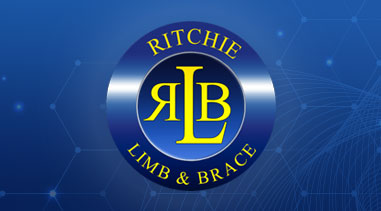
What Type of Prosthesis Do You Have?
Your prosthesis consists of a custom-made socket to fit your residual limb. A variety of liners or padding is used to increase comfort within the socket. Belts, straps, suspension sleeves, or suction hold the prosthesis in place. Specific prosthetic components will be selected to best meet your goal.
Why Is That Important?
A custom prosthesis is unique to your needs. Your lifestyle, activity level, living environment, goals, vocation, and hobbies are all considered when a prosthetic design recommendation is determined. Your prosthesis will enable you to return to many of the activities that you enjoyed prior to your surgery. Your goals are our guide.
What Happens On Your First Visit?
- Shoes: Bring a pair of shoes with you to your first appointment. The shoes should have the following features: Approximately 3/8”-3/4” heel height, preferably lace-up, tennis shoes (i.e. court shoes) are fine. If you are unsure bring several pairs of your prosthetist will help you select the best pair for your new prosthesis.
- Socks: Bring one pair of medium-weight socks. Initial Evaluation.
- Clothing: Wear loose-fitting clothing to all appointments. Sweatsuits or workout clothes are best. If possible, shorts should be worn by those patients with amputation levels above the knee.
- Prosthetic Shrinker: Your shrinker must be worn at all times to control edema (i.e. fluid, swelling) on your residual limb when not wearing your prosthesis. The shrinker may be removed for bathing and immediately replaced.
- Initial Evaluation: Be prepared to stay for at least one hour. Your prosthetist will evaluate your residual limb and discuss prosthetic options with you. Prior authorization from your insurance company is necessary before the prosthetic program can begin.
- Initial Fitting: Be prepared to stay for at least one hour. A diagnostic socket will be fitted to your limb. Then, you are on your way!
Personal Hygiene
The shrinker should be removed each day for cleansing of the residual limb. Use warm water and mild lotion soap. Rinse well and towel dry gently but thoroughly.
Your Wearing Schedule
Your prosthetist will provide you with specific instructions and a wearing schedule. A careful and controlled introduction to weight-bearing focus prevents unnecessary problems. Your prosthetic rehabilitation program requires safe and careful attention. Following directions will promote greater progress.
Donning & Doffing
You will learn how to put on and take off your prosthesis. This is a learned process and you will need to practice. Your prosthetist will help you discover the easiest and best way for you to accomplish this task. Whenever your prosthesis is not being worn, replace the shrinker immediately.
Caring For Your New Limb
The inner socket or lining of the prosthesis should be cleaned each day with diluted soapy water and wiped clean. Be sure to remove all soap residue and allow the socket/liner to dry overnight. Your prosthesis is quite durable but is generally not designed to be submerged in water or left in extreme temperatures (i.e. in a car exposed to the sunlight).


